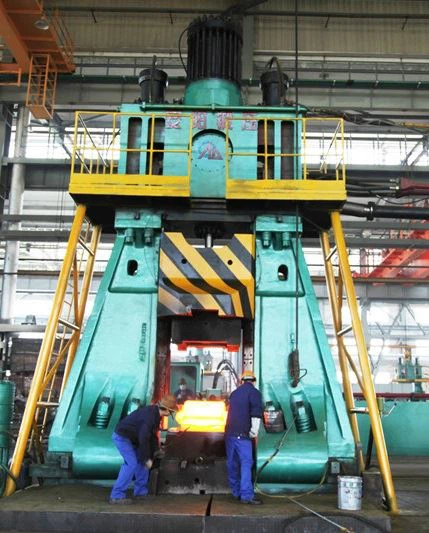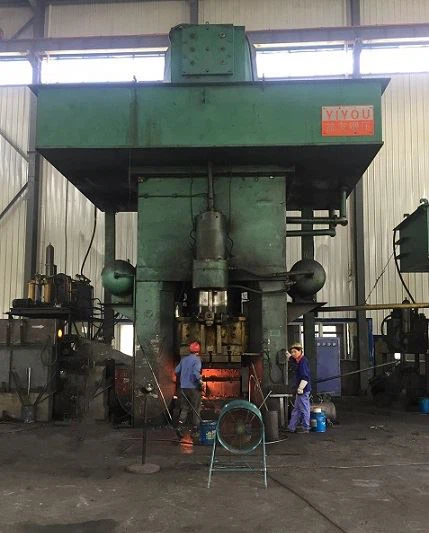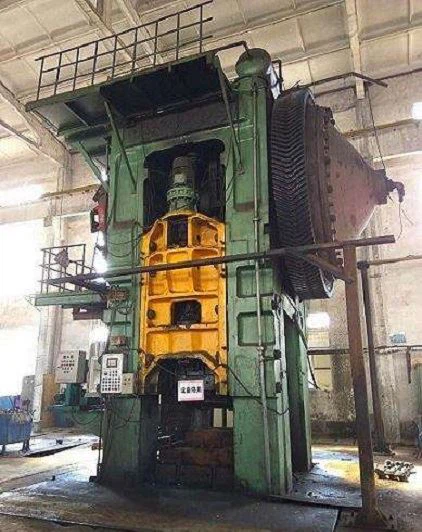
Knowledge
Introduction to the Features of Die-Forging Hammer, Electric Screw Press and Hot Die-Forging Press
Introduction to the Features of Die-Forging Hammer, Electric Screw Press and Hot Die-Forging Press
Die forging hammers, screw presses, and hot die forging presses are the three main die forging equipment in the forging industry. Their respective technologies have been developed correspondingly over the years. As their different performance characteristics, they have the different applicability.
1. Features of Die Forging Hammer
(1) The production of die forging hammers is more flexible, suitable for the production of multi-variety, small batch forgings.
(2) The forging process relies on instantaneous impact, which has the characteristic that a small hammer can do big work.
(3) The die forging hammer is suitable for multi-cavity forging, saving pre-forging equipment.
(4) As thin-walled forgings need to be formed instantaneously due to the rapid temperature drop. So they are suitable to be forged on a die forging hammer.
2. Features of Electric Screw Press
(1) The striking energy of the electric screw press can be precisely controlled, and the forming tolerance of the forging is more accuracy. The requirements for workers are not very high. Only need to set the required striking energy for forging forming, then computer controls the striking process without manual intervention.
(2) Since the electric screw press can accurately control the impact energy, there is no excess energy released on the mold, and the mold life is greatly improved. According to statistics, the mold life of the friction press is generally under 4000 pieces, while the mold life of the electric screw press is generally more than 15,000 pieces, and some even exceed 5,000 pieces.
(3) The electric screw press can perform automatic forging program of multiple-process according to the preset multi-step energy.
(4) When the sliding block of the electric screw press is stationary, the motor does not work and the power consumption is low. Compared with friction press, it can save more than 20% electricity.
(5) The electric screw press has no fixed bottom dead point, no need to adjust the height of the mold, it’s easy to change the mold and to adjust the height of the stroke, the return position is accurate.
(6) The electric screw press has a striking force display to protect the press from overloading.
3. Advantages of Hot Die Forging Press
(1) It has a fixed sliding block stroke during forging, and each forming step is working under the movement of sliding block, which is convenient for mechanization and automation, and has high productivity.
(2) The sliding block has high movement accuracy and a depanning device, which reduces the forging slope, machining allowance and improves forging tolerance, so the forging accuracy is higher than hammer.
(3) The forging force acting on material is a static pressure force, instead of impact force, and the forming speed of the material is low, which is beneficial for forging low plastic materials. Some materials that are not suitable for die forging hammer (such as heat-resistant alloys, magnesium alloys, etc.) can be forged on a hot die forging press.
(4) The vibration and noise when working is small, improved the working conditions.
The main disadvantages of this method is the complex structure of the equipment and the high price. The mould structure is also more complicated than the general hammer forging mould. At the same time, the stroke of the sliding block cannot be adjusted during the forging process. Therefore, it is impossible to perform multiple-step operations (such as drawing and roll-forming) to complete the forming process.
Table 1: Performance comparison table of three die forging equipment
Parameter Item | CNC Die Forging Hammer | Electric Screw Press | Hot Die Forging Press |
Strike speed (m/s) | 4 -- 6 | 0.6 -- 0.8 | 0.3 -- 0.7 |
Cold strike time (ms) | 2 -- 3 | 30 -- 60 | 30 -- 60 |
Forming time (ms) | 5 -- 15 | 30 -- 150 | 80 -- 120 |
Strike frequency | 80 -- 110 | 6 -- 15 | 40 -- 80 |
Flexibility | Good | Ordinary | Ordinary |
Investment ratio | 2 | 1 -- 2 | 4 |
Adaptability | Muti-varieties, small batch | Large quantity | Large quantity |
Structure | Simple | Ordinary | Complex |
Automation level | Good | Ordinary | Good |
Forging process | Multi-hammering forming | One-time Strike forming | Static pressure forming |
Working accuracy | High | Ordinary | High |
Energy consumption | 1 | 2 -- 3 | 3 |
 |
|  |




